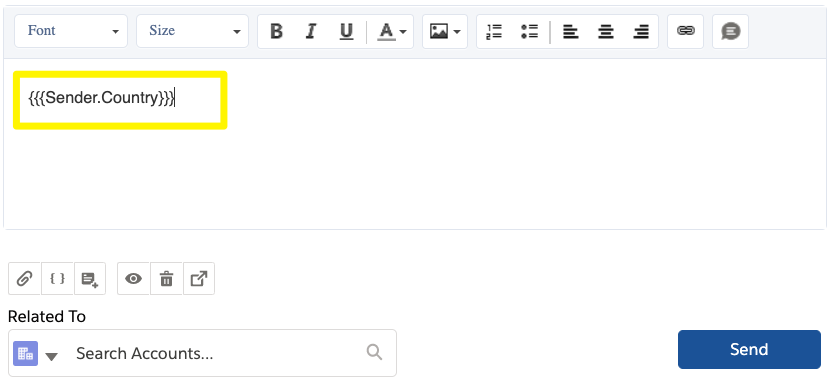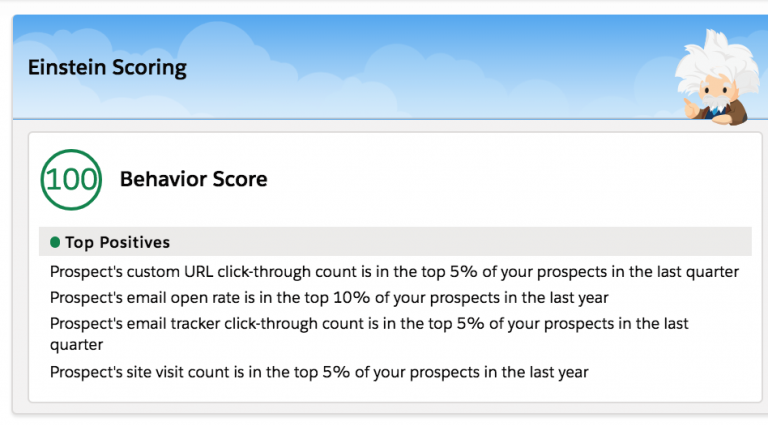The Future of Pardot: 8 Favourite Roadmap Picks
By Lucy Mazalon
Pardot Roadmap sessions give you a sneak peek into the future product – a session that always makes it onto my ‘don’t miss’ list. The latest Pardot Roadmap session at Dreamforce ’19 was no exception, full-to-the-brim with big-bang announcements wrapped in ‘wow’ moments (the gasps and whoops from the audience confirmed this)!
The Salesforce marketing application is a long-time player, but not without plenty of room for improvement; there’s hearsay that Pardot has a significant proportion of product development resource for its size, increasing exponentially in a short time period – all to accelerate Pardot innovation to stay ahead in a crowded Marketing Automation market.
Roadmap Themes to Navigate this Post
Exciting announcements were wrapped into 4 themes:
- Lightning: Pardot moving on to the core Salesforce platform – including the new Lightning Email Builder and Sandboxes!
- Productivity: features modernising clunky marketing processes (creating, updating assets)
- Analytics: from inflexible WYSIWYG reporting – great transitions happening
- Intelligence: injecting Einstein into Pardot further.
Let’s get down to it. I selected these 8 roadmap features because they either apply to the everyday Pardot user, improving the productivity of the masses – or, they signal the new, exciting directions the product is taking.
Before we start: please respect the Salesforce Safe Harbor statement, which in short asks that you make any purchasing decisions based on what is currently available in the product portfolio.
1. Lightning Email Builder
Yes, you have to see it to believe it! A revamped email builder was unveiled, that mirrors the Salesforce Lightning email builder, for a “consistent building experience” across the whole platform.

- Drag-and-drop: pick components onto the email builder canvas from a sidebar menu, and move blocks up and down more easily. You can also define the number of columns a block should be (maximum 4) using a pop-up menu.
- Content Components: out-of-the-box content types include buttons, social media links, images.
- Mobile Responsive: emails built in this builder will be mobile-ready, with a responsive design for any device coded as standard. What’s more, you will be able to switch between email previews for different sized devices (yes, no more rendering tests!)
- Extensible content: similar to building Lightning Record Page Layouts (where you are able to use standard, create your own custom Lightning Components, or download partner-developed components from the AppExchange), the Lightning Email Builder opens up the possibility of adding more options to your component library (that is, downloading from the AppExchange).
This future feature is deserving of the no. 1 spot in my favourites list – so much so, that I have written a dedicated post to the reasons why I am looking forward to its release.

2. Pardot Sandboxes
About time! Sandboxes will enable Pardot Admins and Marketers to test automations, segmentation, or any big data changes in an isolated test environment before activating in the live environment. A sigh of relief – we won’t experience those nail-biting moments deploying everything in production and hoping for the best!
There wasn’t much disclosed about the types of sandboxes (eg. Development, Partial copy, Full copy), or how these sandboxes will be provisioned or refreshed. I’m hoping that these sandboxes will work just like Salesforce sandboxes do – for more details on how this may work, check out this timeless guide to Salesforce sandboxes.
3. Landing Pages and Forms: Snippets and HML
Snippets are reusable blocks of text, image, date, or links that can be pulled into multiple emails, centralising content creation and updates, in one place. Snippets were introduced in the Winter ’20 release for use in emails. Looking forward, with Snippets for Pardot Forms and Landing Pages, you will be able to:
- Reuse forms across campaigns
- Create reusable content for before/after form content that can be updated at the snippet level and cascade down to where it is placed.
HML stands for handlebars merge language (if you were wondering), but all you need to know is this is the new merge language for Pardot content and how you personalise marketing assets with the prospect’s own data. Just like Snippets, this has been available for emails following the August ’19 release, so many Pardot users have already enabled HML. Good, because you’ll be ready for the ability to personalise your form thank you messages.
Note: this was explicitly the thank you content only, not above/below form content etc.


4. Enterprise Consent Management
Now we take a dive into Pardot Business Units, which allow big enterprises to structure their Pardot accounts and prospect data however makes sense for their business – be that by geography, product line or any other relevant dimension. Business Units are relatively new, and implementation comes with a lot of…thinking.
Enterprise Consent Management means that prospect communication preferences, such as an email opt-out, will be respected across all the prospect records for that individual, even if stored in different business units. I believe this will pave the way for more robust consent management generally, regardless of whether you are using Business Units, or not.
A side note: Consent Capture, a fantastic Salesforce Labs solution, won the DemoJam I watched at Dreamforce. Salesforce Labs solutions are developed by Salesforce Employees and available for free on the AppExchange – so you have nothing to lose by checking them out.
5. Einstein Analytics for B2B Marketing
Another Dreamforce announcement for B2B Marketers was Einstein Analytics for B2B Marketing, an analytics platform for marketing data that adds a predictive element into the mix; in short, EAB2BMA will crunch the numbers and tell you what happened, why it happened and predictions and improvements for you to action.
There may be some confusion around how EAB2BMA is different to B2BMA, and how each product is licensed (yes, they are significantly different). Here’s a post that explains what I’ve found out so far.

6. Einstein Behavior Scoring
Pardot Einstein took some time for me to wrap my head around each of its features and how they interact with Pardot/Salesforce data. Einstein Behavior Scoring was one that caught my eye.
Behavior Score will score all prospects by looking at a prospect’s engagement in terms of ‘ready to buy’ behaviour compared to the whole cohort. Over time, the Einstein ‘engagement model’ learns what patterns of marketing touchpoints lead to a purchase, and when it spots these positive insights with other prospects, increases their score too.

What’s new is a Behaviour Scores dashboard, and the ability to use Behavior Score fields in automations (such as Automation Rules).

As you may already know, Pardot Einstein is available with Pardot Advanced edition, and so will be available to the top-tier customers when launched.
7. Enterprise Scale APIs
I know all too well that the minority of Pardot customers use the Pardot API, likely because the native plugin library covers most 3rd party solution use cases, or, the preference to integrate 3rd party solutions with Salesforce and ‘talk’ to Pardot via the Salesforce Connector. If you are an organisation where neither of the above satisfies your requirements, then you would turn to the Pardot API to create your desired integration.
I personally have not worked much with the Pardot API, but I know the roadmap announcements will take the security and Pardot Developer Experience further in leaps and bounds. There is also integrated API authentication coming, which will use Salesforce login authentication to verify integrations connecting to your Pardot data.
8. Search Engagement Studio
This is relatively minor in architectural terms, but major for the everyday user. Engagement Studio has become widespread, and marketers have become skilled at building complex and impressive Engagement Flows using Pardot’s automated campaign visualisation tool. I believe the search function will be useful for the masses, and looking forward to not having to scroll down every Engagement Studio branch while squinting looking for that asset I need to edit or report on.
Others that Didn’t Make the Cut
I chose these picks from the Pardot Roadmap session at Dreamforce based on 2 criteria: a) they are applicable to the everyday Pardot user, improving the productivity of the masses, or b) they signal big movements in the product architecturally and hint at the new, exciting directions the product is taking. I couldn’t include all the roadmap features, so I have listed the remainder below:
- Accounts as Campaign Members: similar to how Leads and Contacts can be added to Campaigns as Campaign Member, you will be able to add accounts to campaigns – all to aid Account-based Marketing (ABM).
- Campaign Related Lists on Accounts: following from the above, this will be how campaign history is displayed as a list on the account.
- Global Reporting (Pardot Business Units): birds-eye view reporting on Prospect and Engagement data from multiple Business Units, in one place.
- Configuration Cloning (Pardot Business Units): all Admin and setup you do can be transferred to new Business Units vs having to re-do all customisations.
- Asset Sharing (Pardot Business Units): share the same form, landing page, email template, file etc. across multiple Business Units. The same applies to assigning Snippets to Business Units.
- Automated Resubscribe Customisation: change the message that appears by default on Pardot forms when an opted out prospect attempts to submit a Pardot form.
- Einstein Recommended Attribution: “someday” Einstein will select the attribution model on your behalf, to use in Campaign Influence reporting.
- Einstein Account-based Intelligence: further details TBC.
The Author
Lucy Mazalon
Lucy is the Operations Director at Salesforce Ben. She is a 10x certified Marketing Champion and founder of The DRIP.

